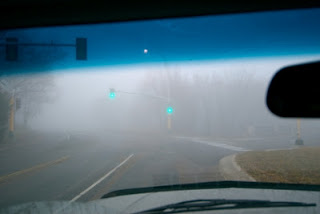
Tips for Teens: When is the Speed Limit too Fast for Conditions?
July 15, 2010
Many teens are so excited to get their driver’s licenses that much of the training they received prior to licensure is quickly forgotten. But it’s important for new drivers to follow the fundamental rules of the road, and adapting speed to conditions is one rule that’s frequently broken.
Driving too fast for conditions is considered speeding and can result in a traffic ticket. But that’s not the only reason to slow down – driving too fast for conditions is a contributing cause of many motor vehicle crashes. Motor vehicle crashes are the leading cause of death for 15- to 20-year-olds (based on 2005 figures, which are the latest mortality data currently available from the National Center for Health Statistics).
A 2009 analysis of speeding-related crashes by the National Highway Traffic Safety Administration (NHTSA) shows that following the speed limit is not enough to prevent a crash when conditions warrant a reduction in speed. The study showed that in speeding-related crashes that caused one or more injuries, 26% of the crashes were contributed to be exceeding the posted speed limit, while 74% were due to driving too fast for conditions. In property-damage-only crashes where speed was a contributing factor, 18% of the crashes were due to exceeding the posted speed limit and 82% of the crashes were contributed to by driving too fast for conditions.
Drivers should reduce their speed:
-immediately when it begins to rain. Roads become very slippery just after the rain begins, because the rainwater mixes with oil on the road that has been dropped from passing vehicles. Driving too fast on wet roads can result in skidding, when the vehicle loses traction with the road and the driver loses control of the vehicle.
-when roads are slippery due to snow or ice. Vehicles have even less traction on snowy or icy roads than they have in rainy weather. On icy roads, drivers should slow to a crawl and get off the road as soon as possible.
–in foggy or smoky conditions. Fog and smoke make it difficult to see ahead, and reducing speed reduces stopping distance.
-before a curve. Too often, drivers realize that they are moving too fast when they are already in the curve, but lowering speed in a curve results in a loss of traction that could cause a skid. Always reduce speed before entering the curve.
-in construction zones. Lower speed limits are usually posted in construction zones, but the new speed limit may not be low enough, especially for new drivers. The distraction of all the activity in the work zone and changes in the road surface can cause more difficulties for drivers who are inexperienced.
-around school zones and playgrounds. Again, lower speed limits are posted in school zones, but children are often present when the lowered limits are not in effect. Children are unpredictable and may walk, skate or bike into the road without checking for traffic.
-at night. Visibility is reduced at night; street lights and the vehicle’s headlights cannot entirely make up for this.
It’s also important to monitor your speed carefully on rural roadways with higher speed limits. Since the speed limit is already high, it’s easy to drive too fast for conditions, which often include curves, animals, farm equipment, and roads that are not well-maintained.
Pressure from teen passengers should also be considered. Passengers may encourage the driver to travel at or above the speed limit. Resisting this pressure is an important exercise in maturity for teen drivers and is an integral part of keeping their driver’s licenses. Unfortunately, it could even be a life-and-death matter.
